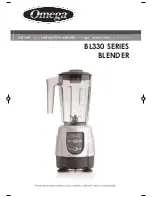
9. Troubleshooting
MODEX-F15-OPTS, MODEX-F15-OPTM series – User's Manual
81
Symptom
Root cause
Action
Refer to
LAN (Ethernet)
No LAN connection can
be established
Incorrect IP address
is set (direct connect)
Disable DHCP server and set the IP
addresses to be in the same subnet.
LW3
IP address conflict
Change the IP address to a not
reserved one or enable DHCP if DHCP
server exists in the network.
LW3
USB KVM
USB device does not
operate
Cables are not
connected on both
sides
Check the USB cable between TX and
the computer.
Not supported USB
device is connected
Keyboard, mouse (USB HID devices) are
supported mostly, check your device
type.
USB crosspoint set
to the non-active
channel
Check the USB mode in the transmitter in
LDC and change to the active channel.
Incorrect USB mode
is set
Check the USB mode in the receiver
in LDC and change to Composite or
Transparent mode.
USB device is always
ejected/re-enumerated at
crosspoints switching
USB mode is set to
Transparent mode
Change the USB mode to Composite in
the receiver.
Optical Module
Extenders are not linked
or remote device cannot
be reached
Fiber cable is
connected to the not
used channel
Check the connectors: from TX
(Channel A) to RX (Channel B).
Optical cable became
contaminated
Use special fiber optical cable cleaning
equipment to carefully clean it.
Different firmware is
installed
Check the firmware in TX and RX; the
versions have to match. If necessary
do firmware upgrade.
9.2. How to Speed Up the Troubleshooting Process?
Lightware’s technical support team is always
working hard to provide the fastest support
possible. Our team’s response time is one of the
best in the industry and in the toughest of cases
we can directly consult with the hardware or
software engineer who designed the product to
get the information from the most reliable source.
However, the troubleshooting process can be even faster… with your help.
There are certain pieces of information that push us in the right direction to finding the root cause of the
problem. If we receive most of this information in the first e-mail or it is gathered at the time when you call
us, then there is a pretty high chance that we will be able to respond with the final solution right away.
This information is the following:
▪
Schematic (a pdf version is preferred, but a hand drawing is sufficient).
▪
Serial number(s) of the device(s) (it is either printed somewhere on the box or you can query it in the
Device Controller software or on the built-in website).
▪
Firmware versions of the devices (please note that there may be multiple CPUs or controllers in the
device and we need to know all of their firmware versions, a screenshot is the best option).
▪
Cable lengths and types (in our experience, it’s usually the cable).
▪
Patch panels, gender changers or anything else in the signal path that can affect the transmission.
▪
Signal type (resolution, refresh rate, color space, deep color).
▪
Emulated EDID(s) (please save them as file and send them to us).
▪
Actions to take in order to re-create the problem (if we cannot reproduce the problem, it is hard for us
to find the cause).
▪
Photo or video about the problem (‘image noise’ can mean many different things, it’s better if we see
it too).
▪
Error logs from the Device Controller software.
▪
In the case of Event Manager issue the event file and/or backup file from the Device Controller
software.
The more of the above information you can give us the better. Please send these information to the Lightware
Support Team (
) to speed up the troubleshooting process.
















































